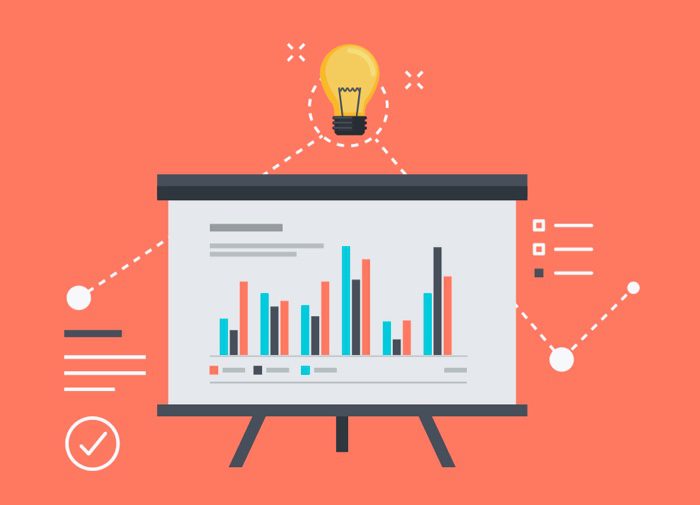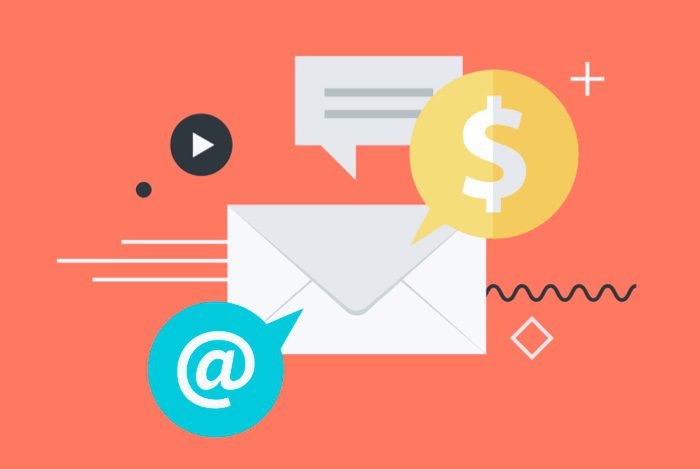
As a business owner or marketing professional, you’re undoubtedly familiar with the idea and practice of content marketing. You’ve probably even got a few new pieces of content in the works right now — a blog, social media posts, an autoresponder sequence. It’s inescapable!
Content is the best (and often least expensive) way to promote a business in 2018. But, unfortunately, many of us go about the whole process the wrong way. We end up creating content because it’s what we’re supposed to do. But this won’t lead to success.
Content without a solid strategy to back it up is just noise on the internet. You don’t want to create noise. You want to create something meaningful that will propel your business forward.
In this blog we’ll discover what a content strategy is and how to create one. And by the end of this post, you’ll know exactly what to do to effectively use content to market your business.
Let’s get started.
What Content Strategy Is (And Isn’t)
Strategy is the foundation of all effective content marketing initiatives. And while every company’s plan of attack will vary, the existence of a strategy and its implementation is the main difference between success and failure.
But oftentimes marketers view “strategy” as synonymous with both a plan and a calendar. In fact, all three are different.
A content plan is your strategy in motion; the specific steps you’ll take to enact your specific approach. A content calendar is the schedule you plan to create and publish your content to.
But a content strategy is the reason you create content in the first place. It outlines how content can help your business, who it should be geared towards and how it should be created.
Like we mentioned previously, content strategy is the foundation. Get this part right and everything else will flow much more naturally.
The Five Aspects of a Foolproof Content Strategy
Effective content marketing strategies that really help fuel business growth and skyrocket average businesses to industry leaders rely on five main components.
These are: business goals, audience, metrics, channels, and tactics. Let’s discuss each in greater detail.
Business Goals
All successful content marketing efforts begin with an honest look at the company and the goals its team members hope to achieve. It’s not simply an activity to just do or a box to check off.
When we say “goals,” we mean the high level, company-wide objectives that you and your team are hoping to accomplish. Not vanity metrics such as page views or bounce rate.
So ask yourself why you’re using content to market your business in the first place. What do you hope to gain by doing so?
Examples of effective business goals as they relate to content marketing are to:
- Generate more quality leads.
- Improve your brand’s SEO efforts.
- Decrease the cost per acquisition.
Just remember to make each of your goals Specific, Measurable, Achievable, Relevant and Time-Bound — or S.M.A.R.T. This will help ensure that you choose the best possible business goals for your content marketing efforts.
We believe that just about every business can benefit from a strategic approach to content marketing. And by starting with what you hope to achieve, you’ll be better able to design an effective strategy to realize those benefits.
Audience
If you don’t know who you’re trying to reach, no secret trick or tactic will give you a shortcut to successful content marketing. Effectively defining your company’s ideal audience comes down to two simple questions:
- Who do you hope to reach?
- Where do they spend time online?
We’ll start by exploring the first question. We’ll tackle the second further down in the “Channels” section of this post.
Who do you hope to reach?
We’ve written an extensive blog post on how to best define and develop crystal clear buyer personas. But we’ll address the key audience defining points here as well.
As a content marketer, you need a well-developed understanding of the people you’re hoping to attract with the content you create. You need to know:
- Demographics: How old are they, where do they live, and what’s their job? Basic questions like these will help you begin to form a picture of your ideal audience. But we have a lot more information to add!
- Psychographics: What are their goals and motivations, what challenges do they face daily, and what fears keep them awake at night? These are the juicy details that will really allow you “inside the mind” of the people you’re targeting!
Each aspect of your audience’ demo and psychographics is important. But there are a few elements you’ll find especially vital to understand.
Roles, Goals, and Challenges
This is the “meat” of your buyer persona — the questions that, when answered, will really give you the necessary insight to craft impressive content marketing campaigns. Let’s start with roles:
- Roles: What is expected of your audience members? Are they marketing managers charged with growing awareness for their respective companies? Maybe you’re trying to reach freelance graphic designers who specialize in crafting awe-worthy logos for B2B service firms.
Whoever it is you’re targeting, understanding what they actually do each day will help you craft content that will resonate with them.
So when defining the role of your buyer persona, consider the responsibilities their company (or the clients that hire them) place on them and the way they need to interact with other company teams or departments.
- Goals: Just like your company has goals it’s working to achieve, so do the individual members of your audience. The trick is discovering what these common goals are so that you can address them with your content.
For example, if your buyer persona consists of HR professionals, some of their goals may include finding a more intuitive HR software system, recruiting the best talent to their start-up company, or implementing more effective employee engagement techniques.
Though it’s tempting, resist the urge to only focus on the audience goals that directly pertain to your company’s products and services.
Remember, the point of this exercise is to help you really understand who you’re creating content for. Your audience is more than the need for what your company offers. So don’t shortchange them and give yourself a holistic view of your target audience.
- Challenges: We all have challenges in our jobs. What exactly does your target audience struggle with? And do these challenges then breed fears that make them lose sleep at night?
Sometimes the challenges and resulting fears are obvious, sometimes they’re not. But with enough digging, every person’s challenges and fears can be identified. Once they are, you’ve really hit the gold mind of audience understanding.
When you’ve identified the key audience information we’ve been talking about, you’ll be able to assemble a persona “chart” that visually maps out your target group. It doesn’t need to be fancy. Even a simple chart like the one below will do the trick.
| Persona: | Roles: | Goals: | Challenges: |
| Bob the Marketing Manager |
|
|
|
It’s important to note that not every single audience member will align perfectly with the buyer personas you create. These are simply archetypes — a general picture of your audience.
Also, many companies have more than one buyer persona; either because they sell different products and/or services to a variety of different people, or because the one product or service they sell appeals to multiple personalities.
So don’t be afraid to segment your audience and create unique personas for each group. In fact, if each of your audience segments have distinct characteristics, you’d be doing you company a disservice by only creating one persona.

Metrics
Now that you know and understand both your company’s goals and target audience, you can begin to define the metrics and channels (next section) that you’ll use.
Metrics are how you’ll measure the success of your content marketing efforts. But in order to get an accurate picture, you need to choose the right metrics to measure. Only then will you truly be able to answer the question of whether content marketing is actually helping your business or not.
So look at your goals. What metrics will best measure your progress as you work your way towards them?
For instance, if one of your content marketing goals is to increase the amount of quality leads that your sales team receives each month, you could use page views as a metric. But is this really the best option?
Sure, page views will tell you how many people view the content you create. But it will tell you nothing about how many of those people are actually converting into potential leads. So perhaps you decide to use the two statistics in tandem.
First you’ll focus on developing content that has a high conversion rate. Once you’re able to accomplish this regularly, you can focus on increasing unique page views — which is basically another way of measuring the traffic your content receives.
Do you see why some thought needs to be put into choosing the correct metrics? If you don’t strategically measure your content marketing efforts, you may end up optimizing for irrelevant metrics, like in the example above.
This is a sure path toward frustration and you aren’t likely to see any success with this approach. So do yourself a favor and take some time to choose the appropriate metrics to measure your progress towards your business goals.
Channels
Channels are the various avenues you use to connect with your audience and, ultimately, promote your brand and products.
Just as your chosen metrics stem from your company’s business goals, the channels you choose will stem from your audience. After all, it doesn’t make much sense to attempt to connect with your target market in places they don’t typically frequent.
But the channels you choose also need to go deeper than audience location. Intent is critical too. By intent we mean the frame of mind your audience is in when they use these various channels.
Yes, there are (literally) billions of people on Facebook. But if your (keyword being your) audience tends to use the platform for more personal reasons — keeping up with family and friends, staying up-to-date with the news, etc. — then it might not be an effective platform for your company.
There are many channels you can use to connect with your audience. We’ll go over a few of them now:

Blogging
Blogging is the quintessential content marketing approach. And for good reason! A company blog can do wonders for your business — in more ways than one.
First, there are the SEO implications. The more stand-out blog posts your company is able to generate, the more likely you’ll be to rank for the important keywords in your respective niche.
And while it takes time to establish a solid SEO presence, this is a fantastic way to reach new potential audience members searching for answers on the topics you’ve written about — for years (potentially) after the piece has been posted.
Blogs are also a great way to connect with your current audience members — remember, content marketing can help you develop deeper relationships with current customers, as well as help you gain new ones — and establish your authority within your niche.
If you’re able to consistently answer the burning questions your audience wrestles with on a daily basis, and do it in an attractive way, your blog has a high probability of success!
Social Media
Social media has become an integral piece of the content marketing puzzle. And with social networks continuing to become more ingrained in our society, this isn’t likely to change.
As marketers, these social networks give us incredible access and insight into our target markets. We can learn a great deal about our audience through the statistics available on many social platforms. And we can also interact with the people who care about our businesses in an very personable way.
The key is determining the right social media channels for your business — the channels that your audience frequence and does so in the preferred frame of mind. Ultimately, they will decide what channels you use, not you.
Once the correct social channels have been chosen for your brand, you can use them to interact with your ideal audience, share news and updates, promote your products and other content you’ve created (like blog posts), and more.
Just don’t forget the “social” aspect of social media! Create conversations, not just one-sided media blasts.

Email is still an incredibly effective content marketing channel. The ROI statistics don’t lie. But, just like everything else we’ve talked about today, the way you use email will be dictated by the audience you’re serving.
For example, does your particular audience respond best to plain text or HTML emails? What about frequency? Are they happy to hear from you once a week or can you increase your mailings?
We’ve written extensively on the blog about current email marketing best practices and encourage you to check out those posts.
As a quick note, if you’re currently looking for an email marketing service provider, or aren’t happy with the one you’re currently using, we suggest you try Robly for free today. Our platform comes with great features such as patent-pending AI technology, mobile responsive templates, detailed reporting features, and more!
Tactics
The reason why many content marketing initiatives fail is because they start with tactics. But in reality, tactics are actually the culmination of everything — business goals, audience, metrics, and channels — we’ve already discussed.
Only when you’ve clarified exactly what you want content marketing to help you achieve, who you’re trying to reach, the metrics you’ll use to measure success, and the channels you’ll use to connect with your target market, should you begin to choose your tactics.
If you’ve done your due diligence, congratulations! Let’s dive into a few different tactics you can use in your content marketing efforts. There are literally countless ones available to you, but we’ll focus on a few of the most valuable.
In-Depth Guides
The creation of an in-depth guide such as an ebook can be a wonderful content marketing tactic when used appropriately. Many people love to receive detail-packed how-to guides on specific topics they’re interested in. And if you’re company can deliver, you may just make a fan for life!
So don’t hold back. Load up your guide with mountains of helpful info and make it incredibly valuable. Once created, you can promote it via an assortment of channels including social media and blog posts, email campaigns, and more. You could even use it to build your email list by requiring an email address to download the guide.
Live Video
In case you haven’t noticed, live video is taking the world by storm and might be a perfect content marketing tactic for your company to try. This approach is generally carried out via social media and the platform you use — Facebook Live, YouTube Live, Periscope, etc. — should align with the social channels your audience uses the most.
As a bonus, after you’re live broadcast is over, you’ll have a new video you can repurpose in your other marketing efforts. #winning
Infographics
We all love a good infographic. They make it really easy to digest important information and are incredibly sharable. So why not use them as a tactic in your content marketing strategy?
If you’re only reason is because you’re not a designer, fear not! There are many companies, such as Canva, HubSpot, and Visme that offer beautiful free templates you can use.
Once your infographic has been created, you can share it on social media, include it in your next blog post, email it to your followers. Get creative and use as many channels as possible to spread your new piece of content with the world.
Case Studies and Testimonials
Case studies and testimonials are one of the quickest ways to build trust between your company and your target audience. People buy from companies they trust.
Think about it, when was the last time you purchased a product online without reading the reviews first? Point proven.
So get these pieces of content created! If you own or work for a B2B company, ask some of your best clients if you can interview them for a case study. You’ll be surprised how many will not only be willing, but excited to participate.
If you sell directly to consumers, then testimonials are the way to go. Again, you can simply ask your audience for reviews. Or you can take what they say in emails, chat boards, etc. and (with permission) use these as testimonials.
Once a case study has been created or a testimonial received, make sure to display it on your website. You could even post about it on social media or craft a blog post around it. Just get it out there for all to see.
Next Stop: Content Marketing Success
There you have it; how to improve your content marketing efforts with a strategic approach! Doesn’t seem so bad, right?
Just remember to always begin with a solid understanding of your company’s goals and the audience you’re intending to reach. Then, define clear metrics to help track your progress, the specific channels you’ll use and the various tactics you’ll employ.
When each of these five steps are implemented, you’ll have created a well-rounded strategy and greatly increased your chances of growing your business with content. Now get out there and strategize!
What have been your results with content marketing thus far? Have you been missing any of the five elements discussed in this post? Share your experiences in the comments below!
Jacob Thomas is a freelance copywriter and content marketer based in Bend, OR. His professional writing approach has helped numerous businesses gain more traffic, leads, and sales. To contact Jacob, visit www.jtcopywriting.com.



